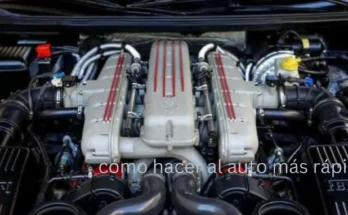In our rapidly urbanizing world, efficient transportation is not just a convenience—it’s a necessity for sustainable development. Urban planners play a crucial role in designing systems that not only meet the demands of growing populations but also minimize environmental impact. This blog post explores innovative strategies to streamline transportation, enhancing urban mobility and paving the way for a sustainable future.
The Challenge of Urban Mobility
Urban mobility refers to the ease with which residents can move around a city. As cities expand, so do the challenges related to transportation, including congestion, pollution, and inefficiencies in public transit. Addressing these issues requires a multi-faceted approach that combines technology, infrastructure development, and policy changes.
Key Challenges:
- Traffic Congestion: Overcrowded roads lead to longer travel times, increased fuel consumption, and higher levels of pollution.
- Public Transit Inefficiencies: Inadequate or poorly managed public transportation systems struggle to meet the needs of urban residents.
- Environmental Impact: Traditional transportation methods contribute significantly to air pollution and carbon emissions.
Strategies for Streamlining Transportation
1. Embrace Smart Technology
Technological advancements offer numerous opportunities to enhance urban mobility. Implementing smart technology solutions can lead to more efficient and responsive transportation systems.
Intelligent Traffic Management
Using AI-driven traffic management systems, cities can optimize traffic flow and reduce congestion. These systems analyze real-time data from traffic sensors and cameras to make adjustments, such as changing traffic light patterns or rerouting vehicles during peak hours.
Mobility as a Service (MaaS)
MaaS platforms integrate various transportation services into a single accessible interface, allowing users to plan, book, and pay for different modes of transport. This integration makes it easier for residents to choose public transit, cycling, or ride-sharing over private cars.
2. Develop Sustainable Infrastructure
Investing in sustainable infrastructure is essential for creating efficient and eco-friendly transportation networks.
Expand Public Transit Networks
Expanding and modernizing public transit options, such as buses, trains, and trams, can significantly reduce the number of private vehicles on the road. Prioritizing high-capacity transit solutions in densely populated areas will further alleviate congestion.
Promote Active Transportation
Encouraging walking and cycling through the development of pedestrian-friendly zones and dedicated bike lanes can improve urban mobility while promoting healthier lifestyles. Cities like Copenhagen and Amsterdam have successfully integrated cycling into their transportation systems, serving as models for others to follow.
3. Implement Policy Changes
Effective policies can guide the development and management of urban transportation systems.
Congestion Pricing
Implementing congestion pricing in heavily trafficked areas can motivate drivers to use alternative transportation modes. Cities like London and Singapore have successfully reduced congestion by charging fees for driving in certain zones during peak hours.
Incentives for Green Vehicles
Offering incentives for electric and hybrid vehicles can reduce the environmental impact of urban transportation. Tax breaks, subsidies, and dedicated parking spots for green vehicles can encourage their adoption.
4. Foster Community Engagement
Engaging local communities in the planning and development of transportation systems ensures that solutions meet the needs of residents.
Public Consultations
Organizing public consultations and workshops allows residents to voice their opinions and contribute to the planning process. This inclusive approach leads to more effective and widely accepted transportation solutions.
Educational Campaigns
Raising awareness about the benefits of sustainable transportation and how individuals can contribute helps foster a culture of eco-friendly mobility. Educational campaigns can highlight the environmental and health advantages of using public transit, cycling, and walking.
5. Efficient Cargo Transportation
Enhancing urban mobility also extends to improving the transportation of goods within cities. A streamlined transportation system can reduce congestion, decrease environmental impact, and promote economic growth.
Urban Freight Solutions
Innovative solutions for urban freight can address the inefficiencies commonly associated with cargo transportation. For instance, utilizing electric freight bikes and smaller electric delivery vehicles can navigate congested urban areas more effectively and with a lower carbon footprint.
Trailers Available for Purchase
Cargo trailers enhance the flexibility and efficiency of transporting goods in urban settings. For business or personal use, the right trailer can significantly improve your logistics. If you’re looking for a reliable cargo trailer for sale in Utah, there are many options for different needs and budgets. Investing in a quality trailer boosts your transport capabilities and contributes to more efficient and sustainable urban mobility.
Conclusion
Streamlining transportation is a critical component of sustainable urban development. By embracing smart technology, investing in sustainable infrastructure, implementing effective policies, and engaging with communities, urban planners can create efficient and eco-friendly transportation systems. These strategies not only enhance urban mobility but also contribute to a healthier, more sustainable future for all.
For urban planners aiming to make a significant impact, the journey towards streamlined, sustainable transportation begins now. Let’s work together to build cities where moving around is easy, efficient, and environmentally friendly.



